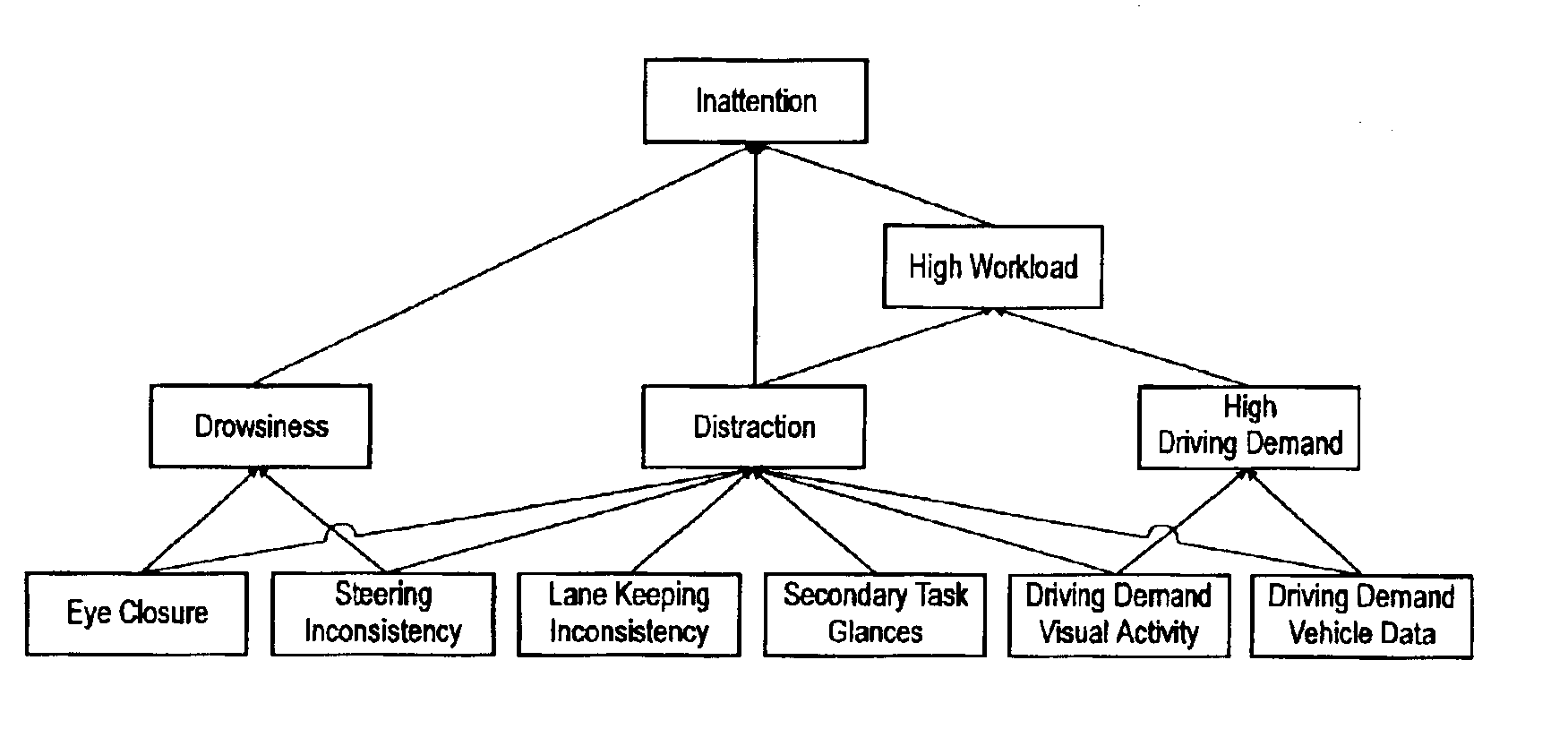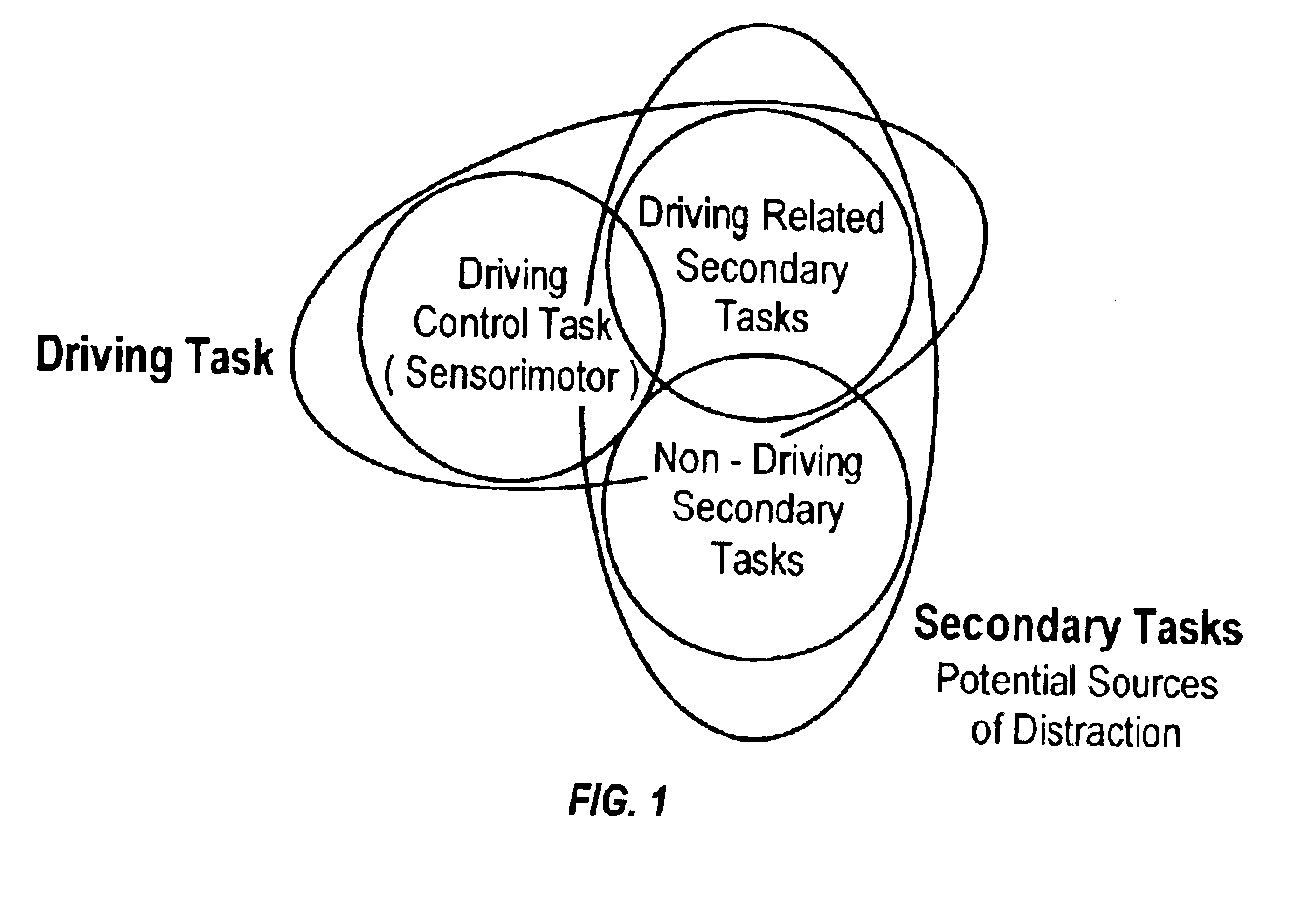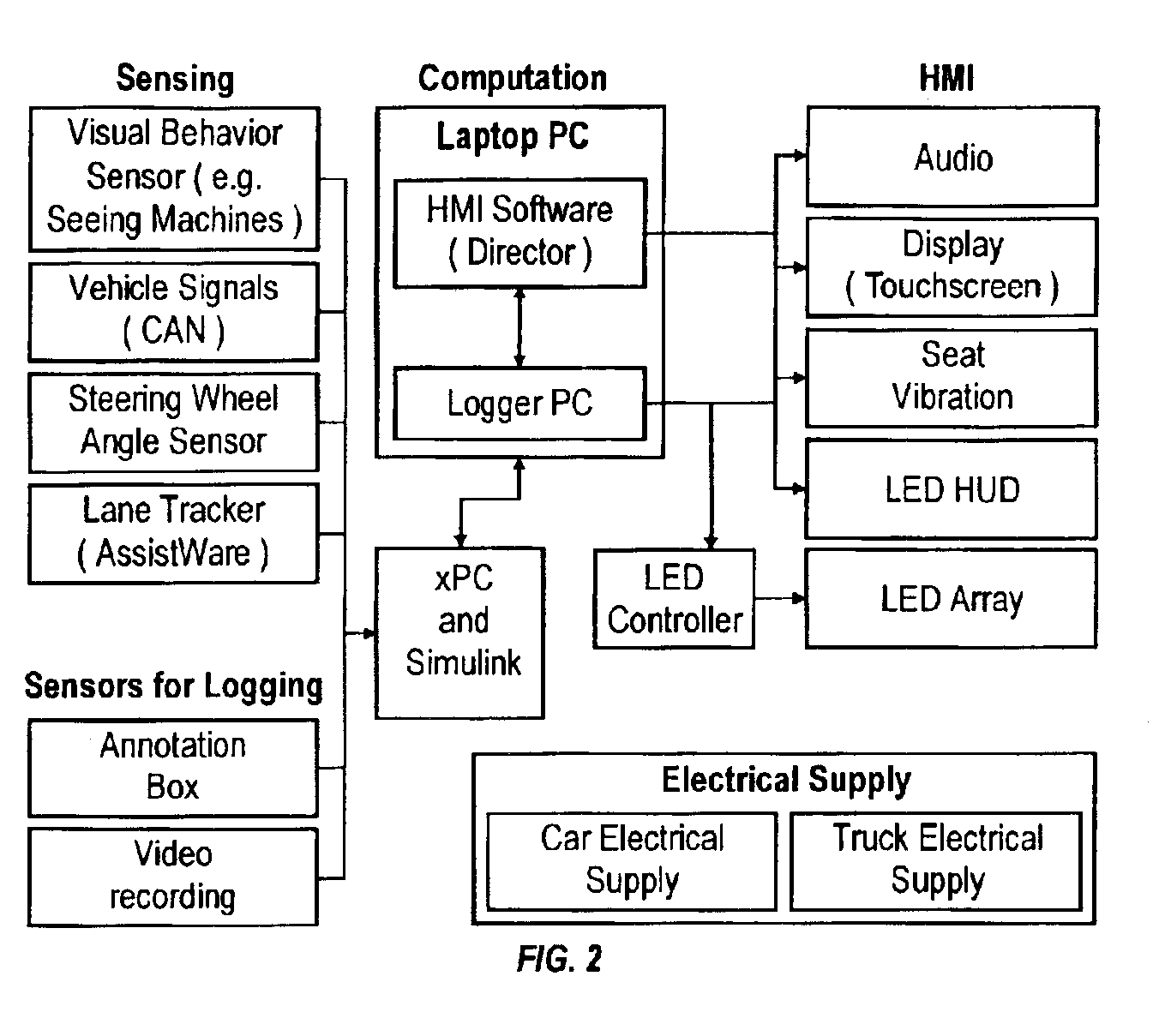System and method for monitoring and managing driver attention loads
a driver and attention load technology, applied in the field of systems and methods, can solve the problems of poor judgment of the performance ability of humans, poor performance of drivers, and not performing uniformly at all times, and achieve the effect of increasing safety and high workload
- Summary
- Abstract
- Description
- Claims
- Application Information
AI Technical Summary
Benefits of technology
Problems solved by technology
Method used
Image
Examples
Embodiment Construction
[0026]In at least one embodiment, the present invention provides a system and method that enables the implementation of attention management concepts in a vehicle, including exemplary hardware upon which the inventive functionalities can be accomplished. Several basic questions and goals are addressed herein, including: what visually derived support do drivers need and how should it be conceptualized to achieve acceptance; how can real-time recognition of driver visual behavior be applied to reduce driving errors and prevent accidents; what is the commercial feasibility of implementation. Functional descriptions are provided for exemplary drowsiness managers; distraction managers, distraction adaptation of forward collision and lane change warning systems; and workload managers. Systems and methods for implementing driving demand estimation from visual behavior are also included.
[0027]One or more of these systems and methods are individually, as well as collectively, described as ma...
PUM
 Login to View More
Login to View More Abstract
Description
Claims
Application Information
 Login to View More
Login to View More - R&D
- Intellectual Property
- Life Sciences
- Materials
- Tech Scout
- Unparalleled Data Quality
- Higher Quality Content
- 60% Fewer Hallucinations
Browse by: Latest US Patents, China's latest patents, Technical Efficacy Thesaurus, Application Domain, Technology Topic, Popular Technical Reports.
© 2025 PatSnap. All rights reserved.Legal|Privacy policy|Modern Slavery Act Transparency Statement|Sitemap|About US| Contact US: help@patsnap.com



